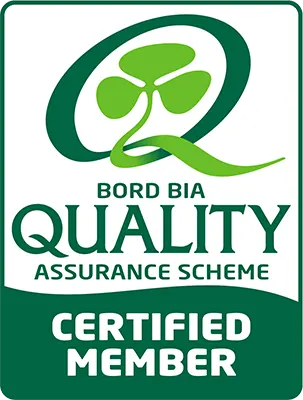Silage season is underway across Ireland — and with cutting starting on many farms, it’s vital to ensure every tonne of grass is preserved to its full potential. While timing your cut is key, it’s how you manage your pit that will ultimately determine the quality of feed available for your livestock this winter.
At Specialist Nutrition, we help farmers optimise forage quality and reduce losses with practical, science-backed advice. Whether you’re cutting this week or still waiting for the right weather window, here’s what you need to know to pit your silage right this season.
Why Pitting Matters More Than Ever
Silage quality starts in the field — but it can be lost quickly at the pit. Poor consolidation, oxygen ingress, or surface contamination can lead to heating, mould growth, and dry matter losses. These issues reduce the nutritional value of your silage and increase your reliance on bought-in feed later in the season.
A well-managed pit:
- Preserves feed energy and protein
- Improves animal performance
- Lowers your cost per litre or kilo of gain
Covering and Compacting: How It’s Done on Irish Farms
Most first cuts take place in May and June, making late spring and early summer the busiest time for covering silage pits.
The Pitting Process in Practice:
- Grass Delivery & Pushing Up
- Silage is drawn into the yard in trailers and tipped onto a concrete slab.
- Large loaders with 3–4-metre rakes push up the grass. These loaders are equipped with dual wheels for added safety and stability, particularly when rolling along the pit edge.
- Rolling the Grass
- The grass is continuously rolled to remove air. Loaders ensure the entire top surface is compacted.
- Importantly, only the loader operator and possibly one person tidying edges should be in the area during this stage for safety.
- Covering the Pit
Once the pit is filled, it should be sealed immediately using strong, high-quality materials. Many Irish farmers use a two-layer system for best results — typically starting with an oxygen barrier film and finishing with a durable top sheet.
At Specialist Nutrition, we recommend using our Silostop Orange Oxygen Barrier Film as your first layer. This innovative film significantly reduces oxygen ingress, helping to preserve more dry matter and reduce spoilage during storage.
For the top layer, our Silostop Anti-UV Cover provides long-lasting protection against weather and UV damage. It’s tough, reusable, and designed to work in tandem with the Silostop Orange film to provide a reliable, airtight seal.
When covering:
- Start at the high end of the pit and roll the film down in 2-metre sections.
- Use the loader or 4WD tractor to position heavy items like rolls of plastic or netting.
- Tyres, sandbags, or purpose-made mats can be used to weigh the cover down. Car tyres are preferred for safety — avoid larger ones which can pose a hazard.
- For extra protection, some farmers use an old cover or netting over the top layer.
Taking the time to use the right materials and covering the pit carefully will go a long way in protecting feed quality right through to feed-out.
Safety First: Working Around Silage Pits
Pitting is one of the busiest and most hazardous jobs on Irish farms. Machinery, height, and tight timeframes all increase risk.
Key Safety Guidelines:
- Prepare access routes and clear working areas before covering begins.
- Keep children and unauthorised persons away from the yard and pit at all times.
- When working on pits without walls, stay well back from edges and have spotters on the ground.
- Always wear gloves when handling tyres and check they are free from sharp edges.
- Use handrails if available; otherwise, ensure good footing and communication throughout.
- Plan ahead with contractors to coordinate the movement of loaders and materials safely.
Best Practices for Effective Silage Pitting
1. Prepare the Pit Properly
Line pit walls with durable plastic sheeting to prevent side ingress of oxygen. A narrow pit face speeds up feed-out and reduces spoilage.
2. Use Heavy-Duty Sheeting
Opt for tear-resistant plastic with a reliable underlayer. This helps maintain anaerobic conditions crucial for preserving nutrients.
3. Seal the Pit Immediately
Seal the pit tightly as soon as filling is complete. Secure edges well using tyres, mesh, or weighted covers to exclude oxygen and initiate fermentation quickly.
4. Fill Fast and Compact Thoroughly
Efficient filling and thorough compaction at every layer are essential to eliminate trapped air and promote good fermentation.
5. Manage the Pit Face During Feed-Out
Use a shear grab to keep the pit face clean and tight. Reseal any exposed areas daily to reduce the risk of secondary spoilage.
Know Your Limits With Pits
As farm sizes increase, particularly in the dairy sector, there is a growing trend towards constructing taller silage pits. However, this practice raises significant safety concerns. Here are some of the risks associated with excessively high silage pits, especially when machinery is required to work at dangerous heights on unstable surfaces.
Key Safety Considerations:
- Height Limit Recommendations: The Association of Farm and Forestry Contractors in Ireland (FCI) has called for a working height directive to limit the height of silage pits to 6 metres or to twice the height of the retaining walls. This measure aims to prevent operators from working in hazardous conditions.
- Stability of Machinery: Wheeled loaders, often weighing over 15 tonnes, are commonly used to compact silage. Operating these heavy machines at significant heights on a grass silage surface can be unstable and dangerous.
- Risk of Overloading: With larger herds and increased silage requirements, some farmers may request or insist on constructing silage pits that are over 10 metres high. This practice has raised concerns among contractors regarding the safety of their drivers working at such heights.
To ensure safety during silage operations, it’s crucial to adhere to recommended pit heights and consult with contractors to design pits that are both practical and safe.
Managing Silage Effluent Correctly
Effluent is both a nutrient loss and an environmental risk. Make sure your yard and silage pit are designed to collect and store effluent safely. Avoid any runoff into drains or watercourses — this is both illegal and environmentally damaging.
Cutting at the right time, early wilting, and proper chop length all help reduce effluent output. However, drainage infrastructure and planning ahead are essential.
Should You Use a Silage Additive?
Yes. If weather conditions are poor or grass quality is less than ideal (low sugar, high nitrate), a silage additive could protect your investment. Inoculants and preservatives support fermentation, reduce heating, and improve silage stability, especially at the pit face.
Plan Ahead to Avoid Winter Shortfalls
Even with a successful first cut, unpredictable summer weather may lead to lower grass growth and additional feeding pressure later.
Now is the time to:
- Review current forage stocks
- Budget for winter feed needs
- Identify and book alternative feeds early
Get Tailored Advice for Your Farm
A well-managed silage pit is the foundation of winter feed success. With first-cut underway and summer conditions still unpredictable, the actions you take now — from harvesting and pitting to sealing and storing — will directly impact livestock performance and your bottom line in the months ahead.
At Specialist Nutrition, we’re here to help you make the most of every tonne. From practical advice on pitting to high-performance silage covers and additives tailored to your grass conditions, we provide the tools and guidance you need to ensure feed quality all winter long. Contact Specialist Nutrition today for tailored solutions that work for your farm.





